Cultural Tour In India
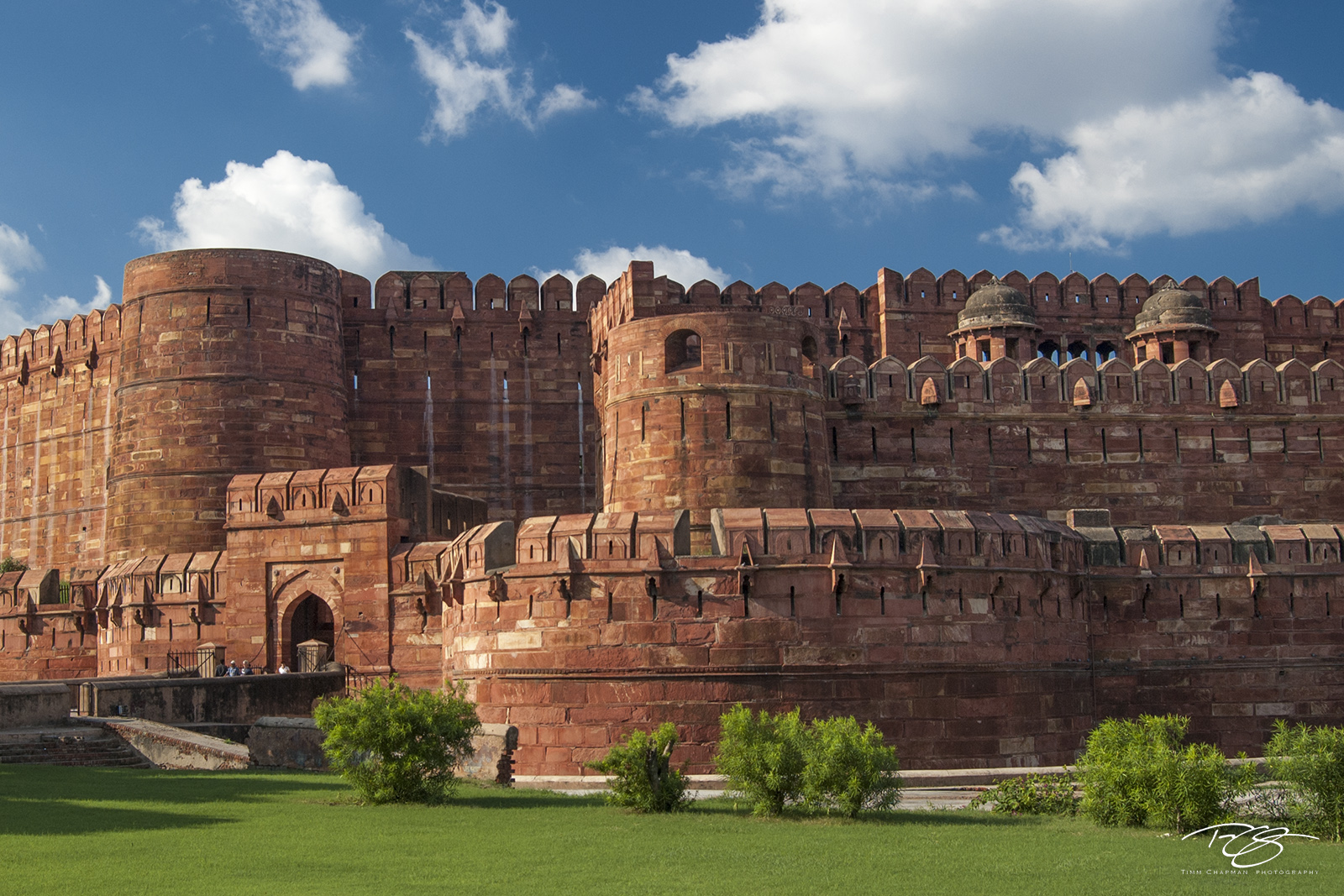
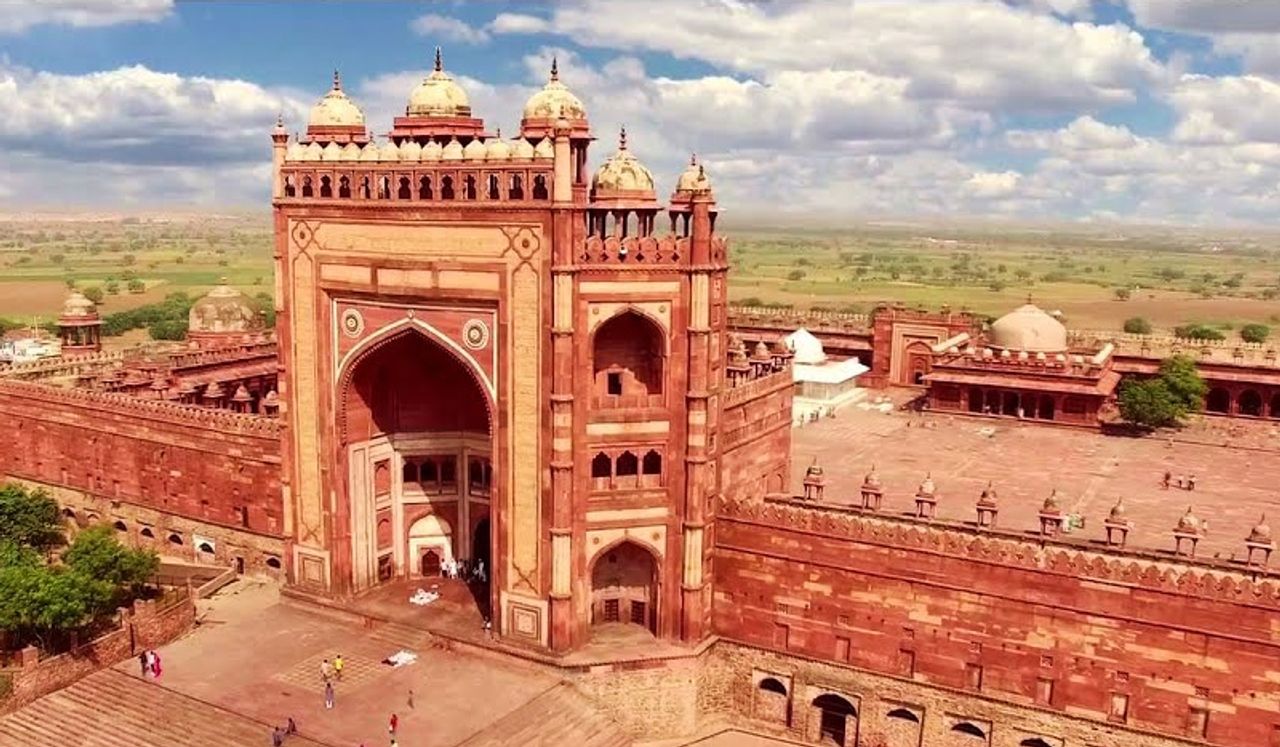
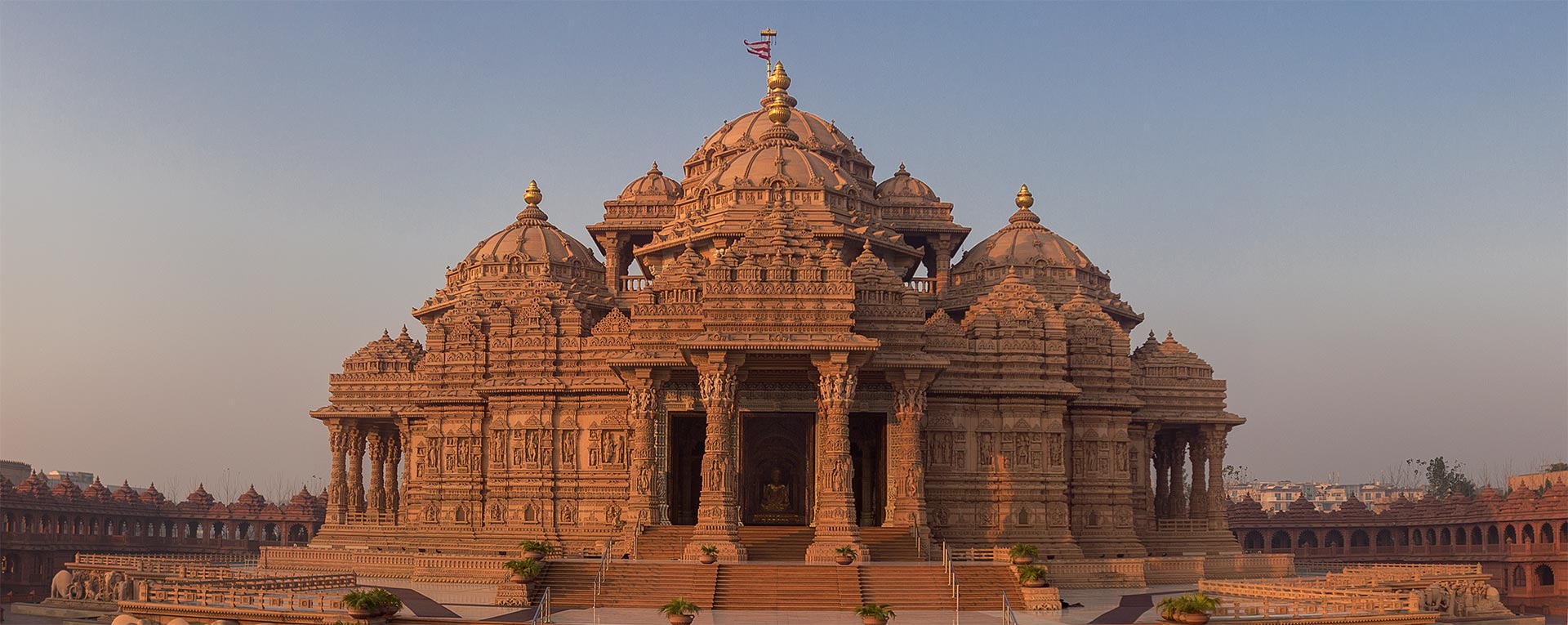
Embark on a captivating journey through Delhi and its surrounding areas, exploring a rich tapestry of history, architecture, and cultural heritage. From the grandeur of Mughal monuments in Delhi to the serene landscapes of Rajasthan, immerse yourself in the vibrant colors, flavors, and traditions that define this region. Visit ancient forts, magnificent palaces, and sacred temples, experiencing the essence of India’s diverse cultural mosaic.
Below are the extraordinary destinations that contribute to our comprehensive Cultural Tour, offering an unforgettable glimpse into Delhi and its surrounding areas:
Red Fort
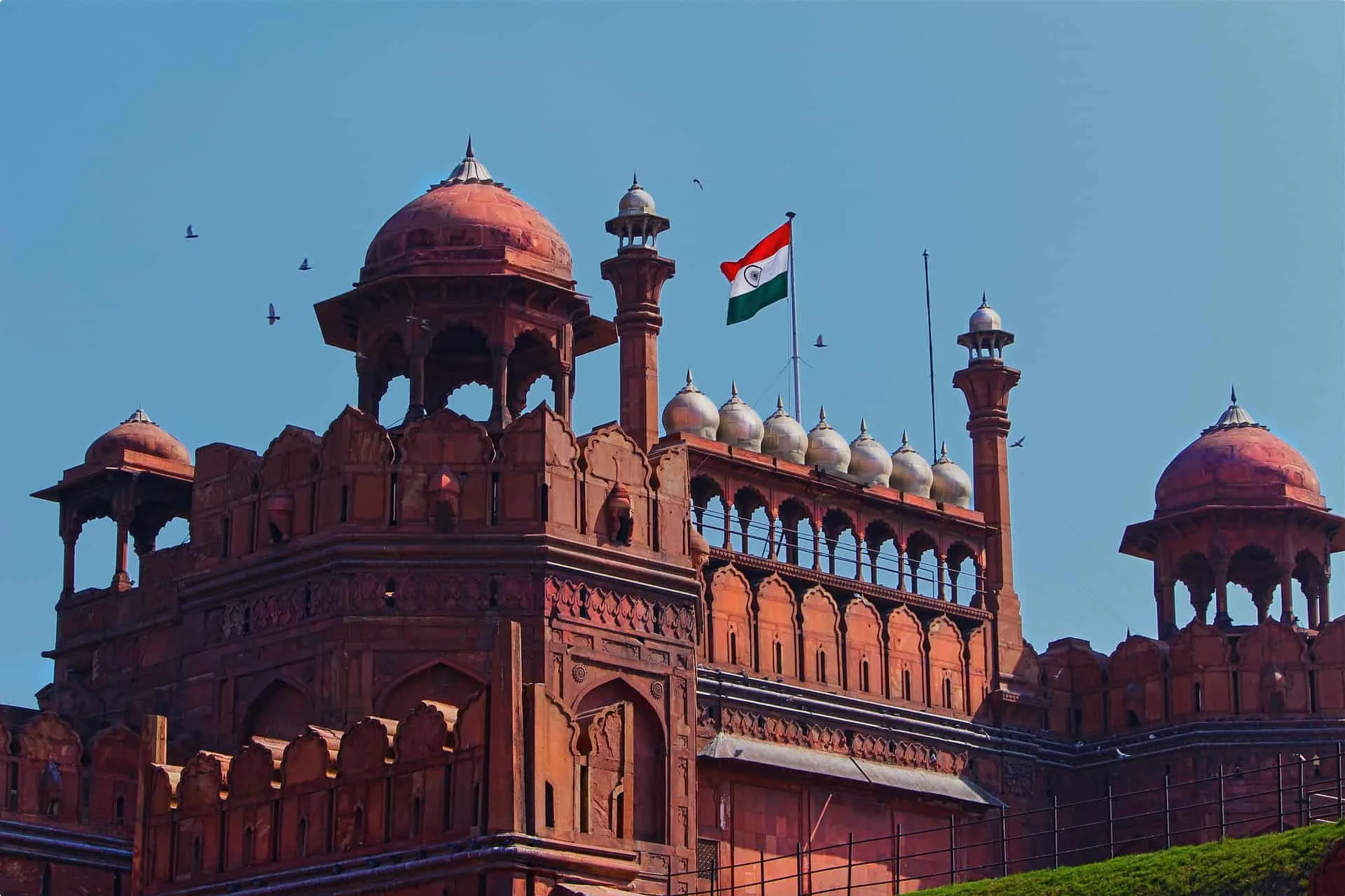
The Red Fort, a UNESCO World Heritage Site, is a majestic symbol of Mughal architecture and power. Built in the 17th century by Emperor Shah Jahan, this fortress-palace served as the residence of Mughal emperors for centuries. Its impressive red sandstone walls enclose exquisite palaces, gardens, and audience halls where historical events and royal ceremonies unfolded. The fort’s iconic Lahore Gate and Diwan-i-Khas (Hall of Private Audience) are architectural marvels that reflect India’s rich cultural heritage.
Qutub Minar

Qutub Minar, the tallest brick minaret in the world, stands as a testament to Delhi’s rich history and architectural brilliance. Built in the early 13th century by Qutb-ud-din Aibak, the first ruler of the Delhi Sultanate, this UNESCO World Heritage Site is adorned with intricate carvings and verses from the Quran. The five-storied tower, surrounded by ancient ruins of Hindu temples, represents the cultural fusion of Hindu and Islamic influences during medieval India.
Humayun's Tomb
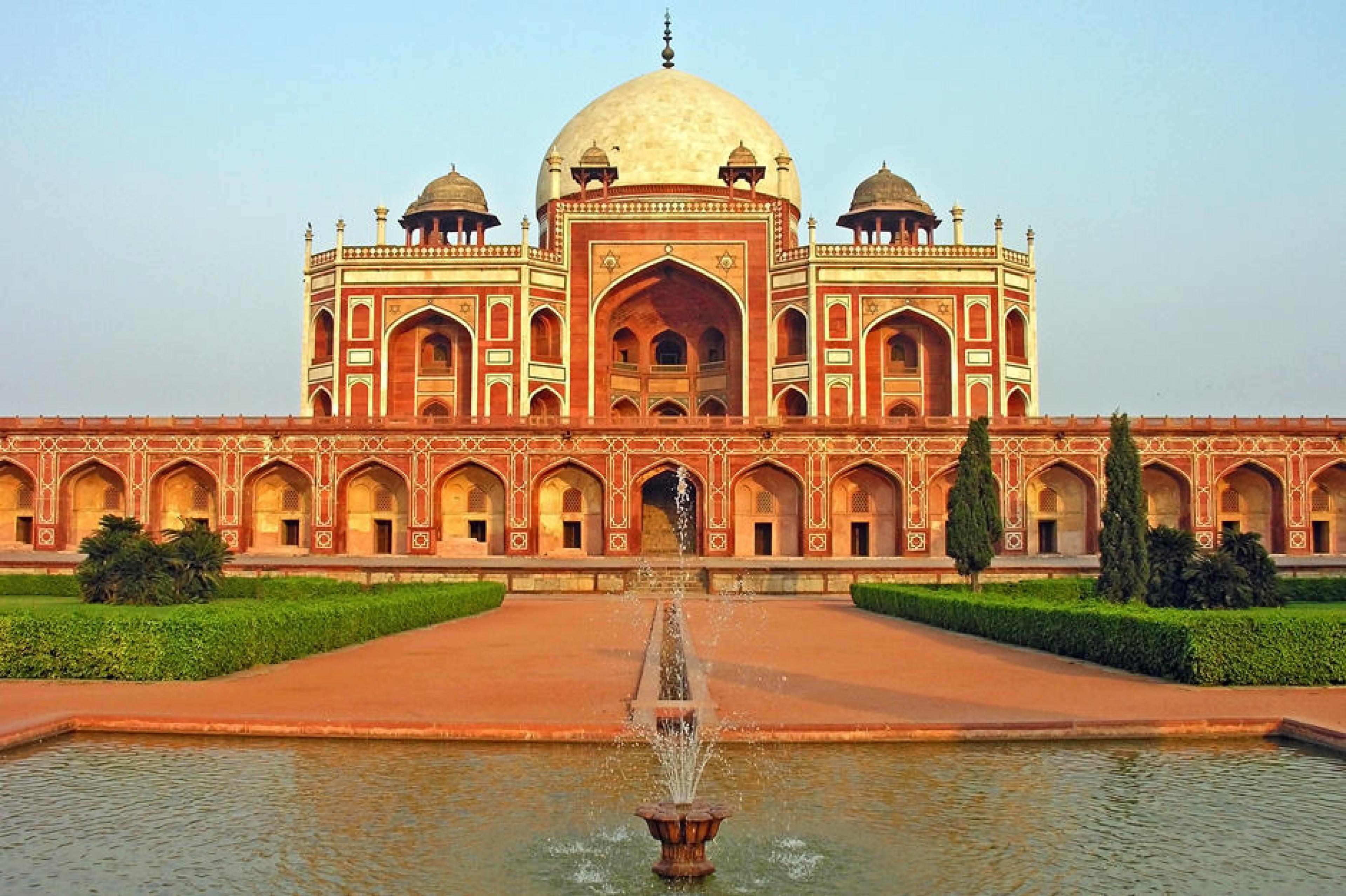
Humayun's Tomb, commissioned by Empress Bega Begum in the mid-16th century, is a masterpiece of Mughal architecture and a UNESCO World Heritage Site. This splendid mausoleum, built for Emperor Humayun, features a symmetrical garden layout, towering sandstone dome, and intricate marble lattice screens. The tomb’s serene beauty, set amidst lush gardens and reflective pools, inspired the design of the Taj Mahal and remains a testament to India’s artistic and cultural legacy.
Lotus Temple
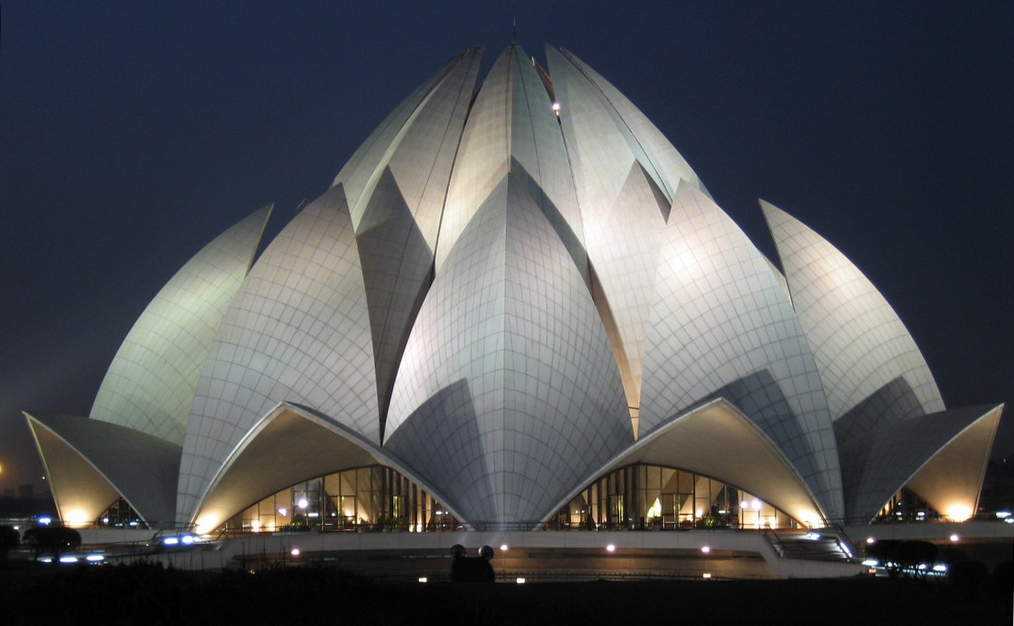
The Lotus Temple, renowned for its unique lotus-shaped architecture, is a Bahá'í House of Worship and a prominent spiritual landmark in Delhi. Completed in 1986, this serene white marble temple welcomes people of all religions to pray and meditate in its tranquil surroundings. Surrounded by lush gardens and reflecting pools, the Lotus Temple embodies the Bahá'í principles of unity, peace, and harmony among all people and religions.
Akshardham Temple

Akshardham, one of the largest Hindu temples in the world, is a spiritual and cultural complex dedicated to Bhagwan Swaminarayan. Built in 2005, this architectural marvel showcases India’s ancient art, culture, and spiritual heritage through exhibitions, gardens, and a stunning temple complex. The intricately carved mandir, surrounded by lush lawns and water features, invites visitors to experience the beauty of Indian architecture and spirituality.
Jama Masjid
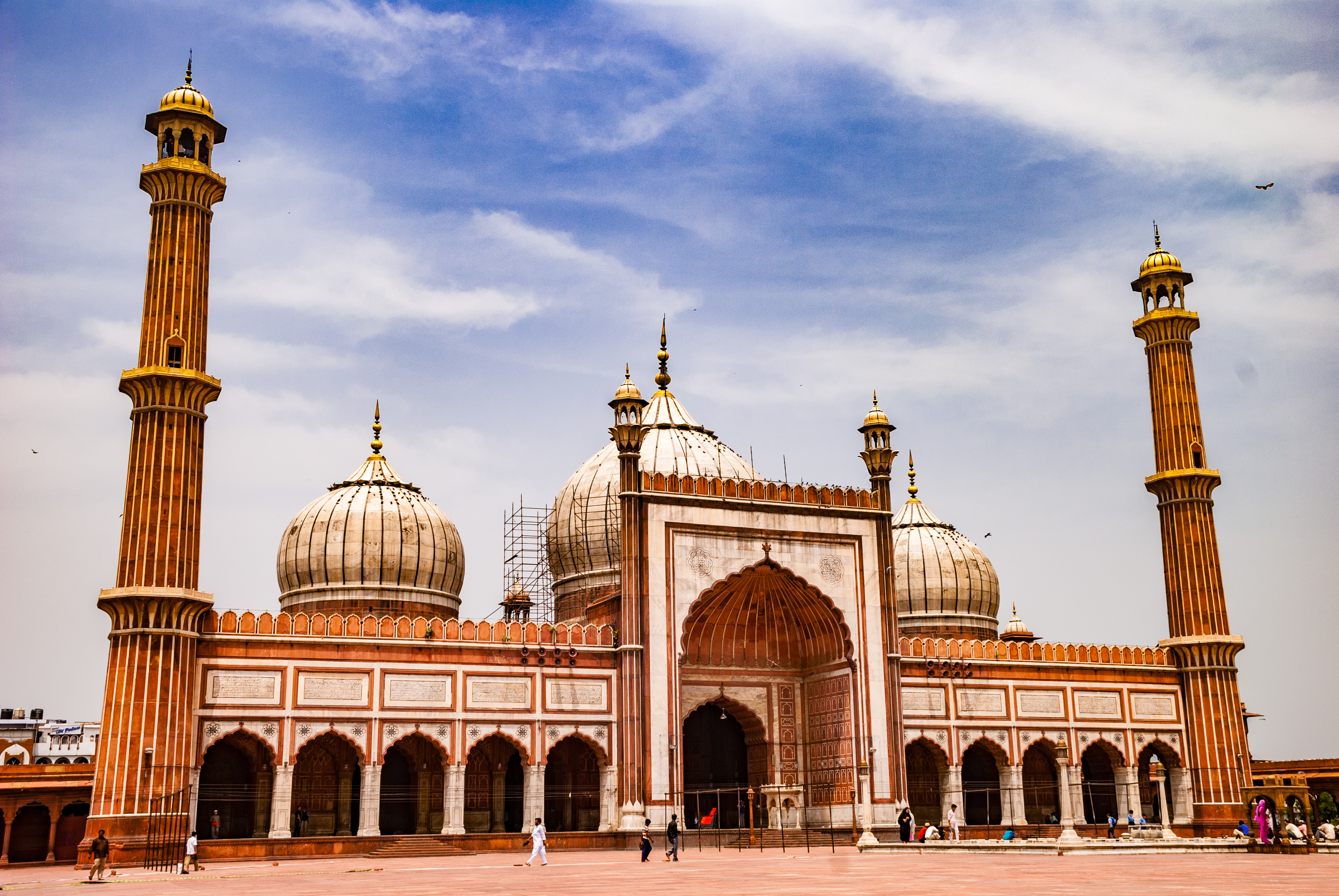
Jama Masjid, Delhi’s largest mosque and a symbol of Mughal grandeur, was commissioned by Emperor Shah Jahan in the 17th century. Constructed from red sandstone and white marble, this iconic mosque features three grand domes, minarets, and a vast courtyard capable of accommodating thousands of worshippers. Jama Masjid offers panoramic views of Old Delhi and remains a significant spiritual and architectural landmark in India’s capital city.
Raj Ghat

Raj Ghat, a serene memorial dedicated to Mahatma Gandhi, marks the spot where the Father of the Nation was cremated in 1948. Surrounded by lush gardens and simple white marble, this memorial epitomizes Gandhi’s principles of simplicity and non-violence. Visitors can pay homage to Gandhi’s legacy by viewing the eternal flame that burns at Raj Ghat and exploring the adjacent Gandhi Memorial Museum, which showcases his life and teachings.
Agra Fort

Agra Fort, a UNESCO World Heritage Site, served as the main residence of the Mughal emperors until 1638 when the capital shifted to Delhi. Built primarily of red sandstone, this colossal fort complex encompasses palaces, mosques, and audience halls, each reflecting the grandeur of Mughal architecture and craftsmanship. The fort’s towering walls offer panoramic views of the Taj Mahal across the Yamuna River, providing a glimpse into India’s imperial history and cultural legacy.
Fatehpur Sikri
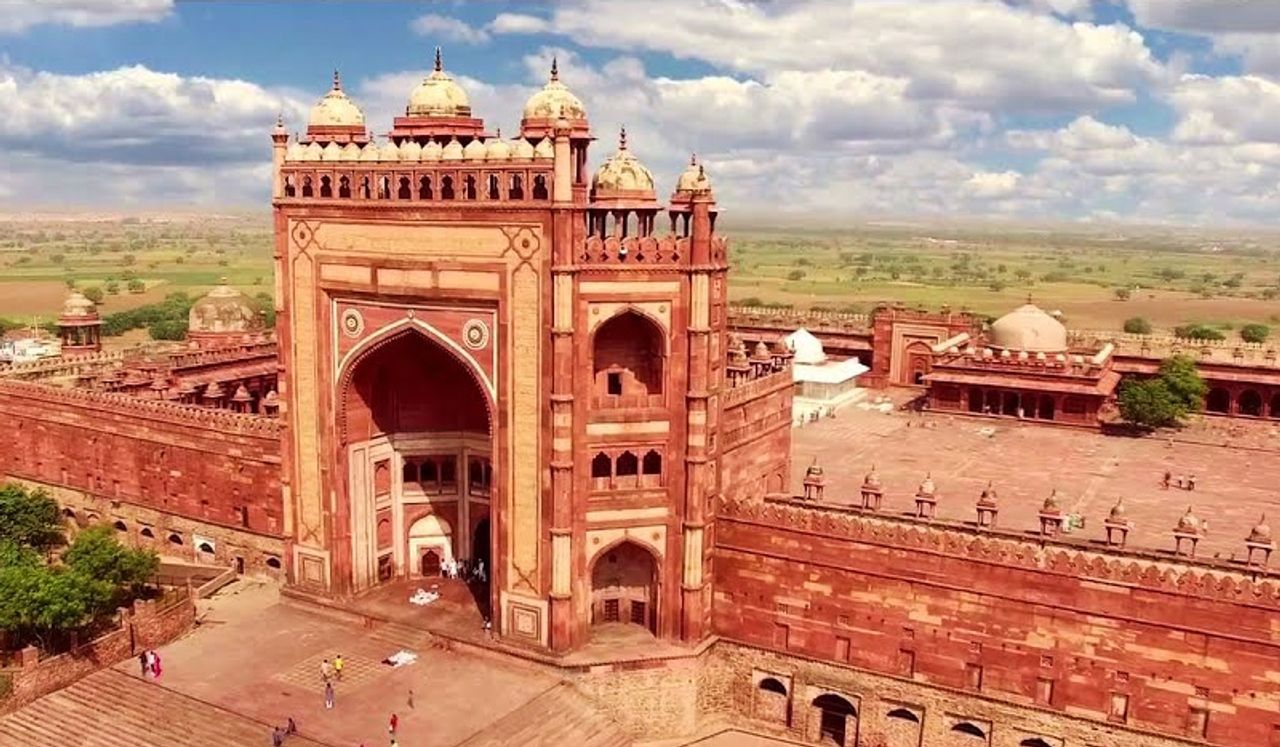
Fatehpur Sikri, a UNESCO World Heritage Site, was founded by Emperor Akbar in the late 16th century and served as the Mughal capital for 14 years. This magnificent red sandstone city houses palaces, courts, mosques, and other structures that blend Hindu, Islamic, and Persian architectural styles. The Jama Masjid, Buland Darwaza (Victory Gate), and the Tomb of Salim Chishti are notable landmarks that highlight the city’s cultural and historical significance.
Jaipur City Palace

Jaipur City Palace, a royal residence built in the early 18th century by Maharaja Sawai Jai Singh II, is a magnificent blend of Rajput, Mughal, and European architectural styles. This sprawling palace complex houses courtyards, gardens, and museums showcasing artifacts from Jaipur’s royal history. The Chandra Mahal within the palace is still home to the Jaipur royal family. The palace’s ornate gates, intricate marble work, and vibrant paintings offer a glimpse into Rajasthan’s rich cultural heritage.
Amber Fort

Amber Fort, perched on a hilltop overlooking Maota Lake, is a stunning blend of Rajput and Mughal architectural styles. Built in the late 16th century by Raja Man Singh I, this majestic fort-palace complex features expansive courtyards, intricate carvings, and stunning panoramic views of the surrounding hills. The fort’s Sheesh Mahal (Hall of Mirrors), Diwan-e-Aam (Hall of Public Audience), and Ganesh Pol (Ganesh Gate) are architectural marvels that showcase the opulence of Jaipur’s royal heritage.
Hawa Mahal
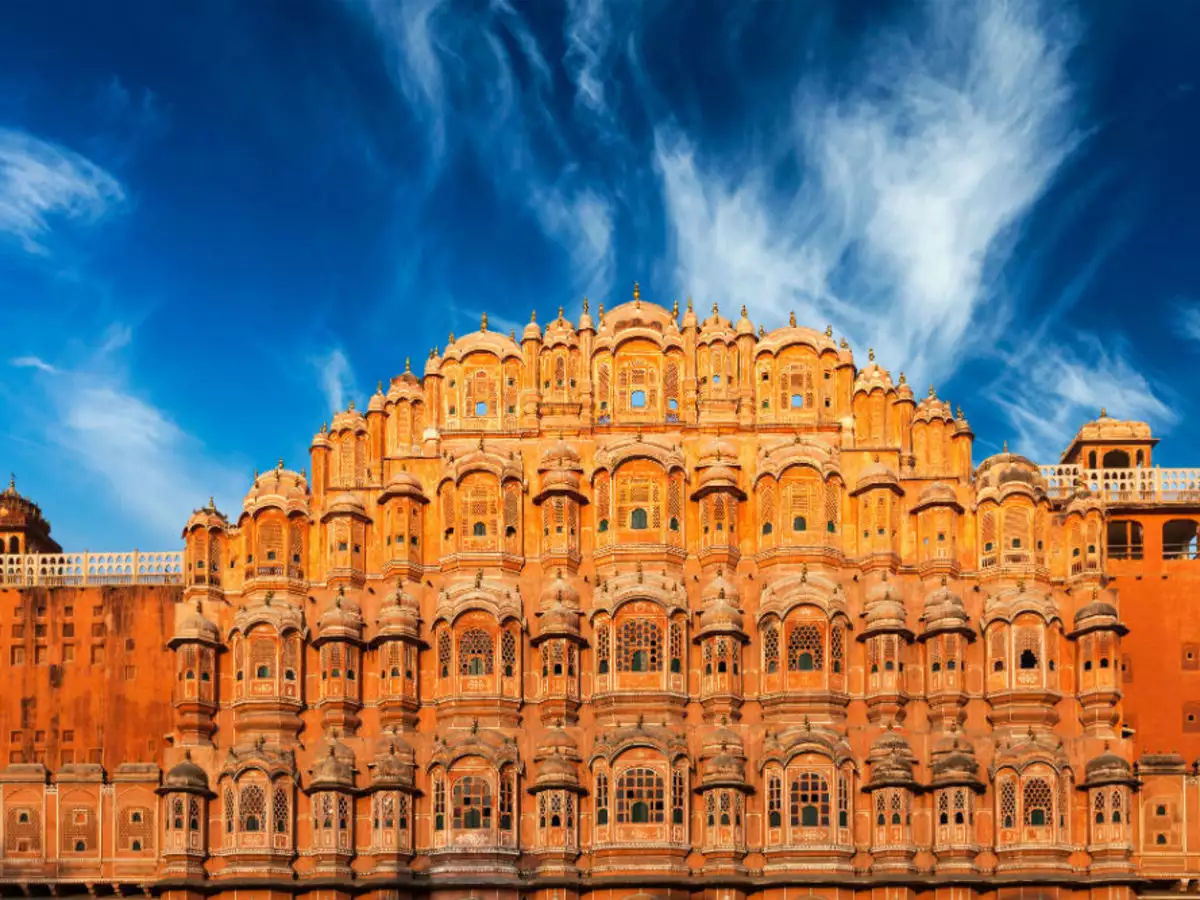
Hawa Mahal, also known as the Palace of Winds, is an iconic five-story palace constructed of pink sandstone. Built in 1799 by Maharaja Sawai Pratap Singh, this architectural marvel features intricately latticed windows and balconies designed for the royal women to observe street festivities while remaining unseen from the outside. The palace's unique honeycomb structure, resembling the crown of Lord Krishna, is a symbol of Jaipur's rich cultural and architectural heritage.
Jantar Mantar
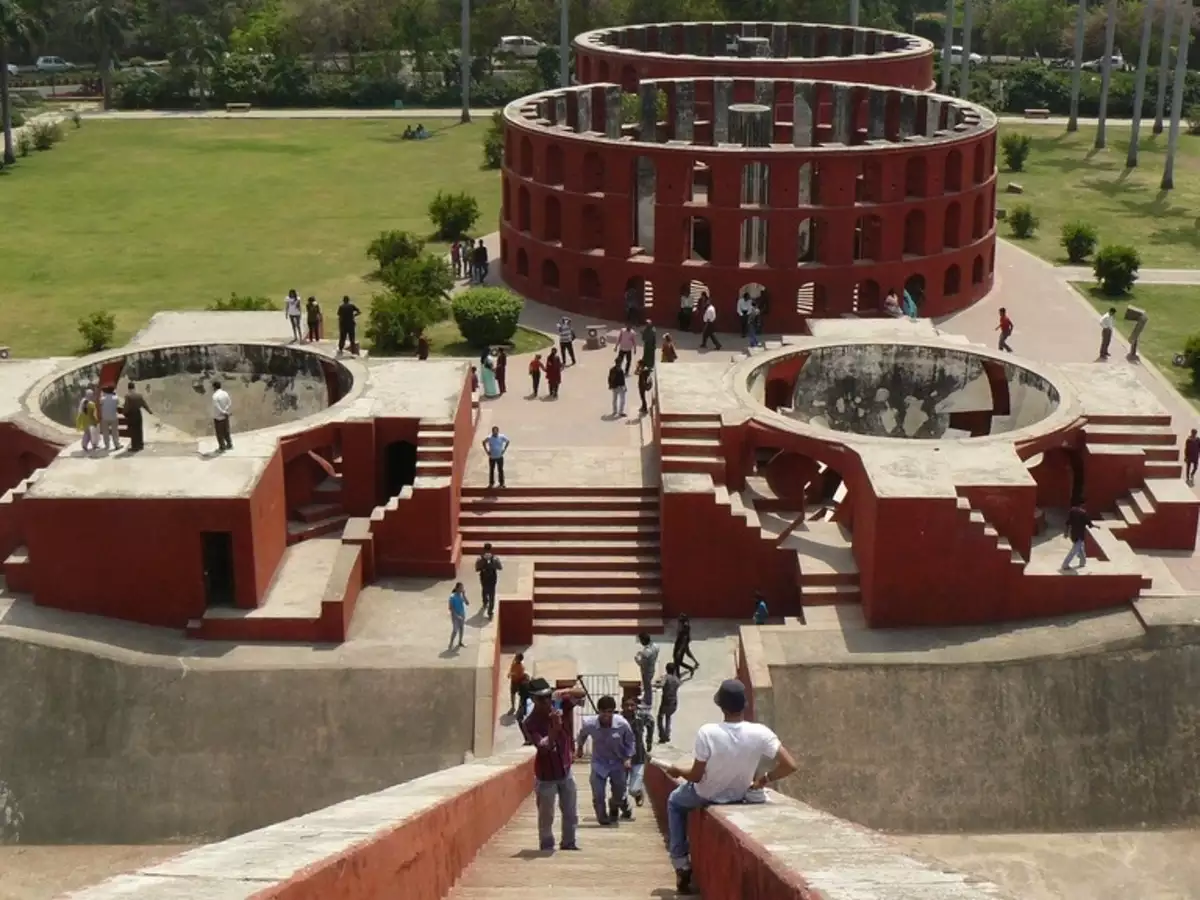
Jantar Mantar, an astronomical observatory built in the early 18th century by Maharaja Sawai Jai Singh II, is a UNESCO World Heritage Site. This collection of architectural astronomical instruments allows precise measurement of celestial bodies' positions and time determination. The Samrat Yantra, the largest sundial in the world, stands as a testament to India's scientific prowess during the Mughal era. Visitors can marvel at the complex geometrical structures and learn about ancient Indian astronomy.
Pushkar
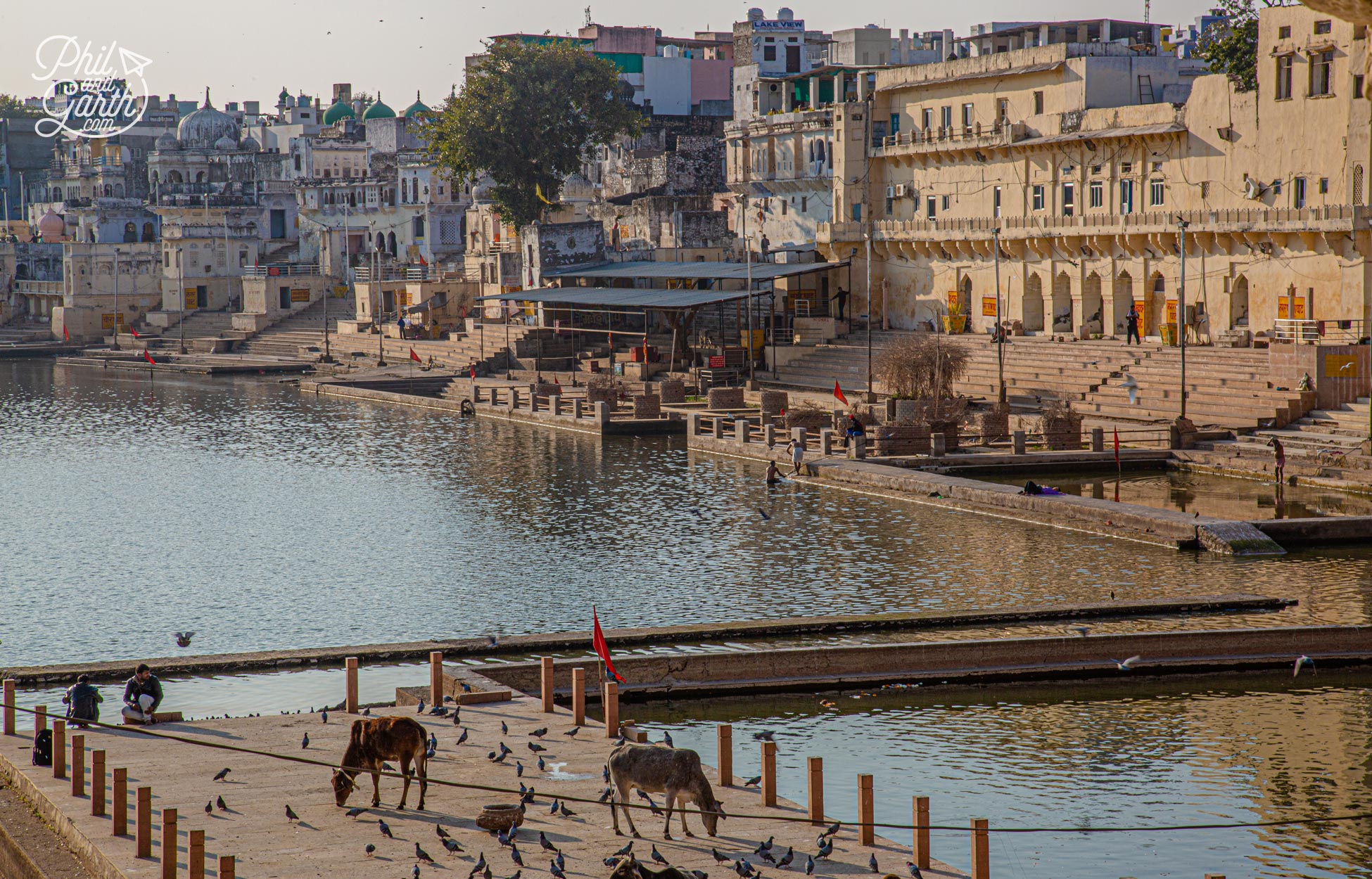
Pushkar, a sacred town nestled around the serene Pushkar Lake, is one of the oldest cities in India. It is renowned for the Brahma Temple, dedicated to Lord Brahma, the creator of the universe, making it one of the few temples dedicated to Brahma in the world. The annual Pushkar Camel Fair, held in November, attracts pilgrims, traders, and tourists from around the globe, offering a vibrant showcase of Rajasthan’s cultural richness. The town’s narrow streets are lined with temples, ghats, and bustling markets, providing visitors with a spiritual and sensory journey through India’s ancient traditions.
Itinerary

Day 1 - Delhi
Arrive in Delhi, the capital city of India, known for its rich history and vibrant culture. Explore historical monuments such as the Red Fort, Qutub Minar, Humayun's Tomb, Lotus Temple, Akshardham Temple, Jama Masjid, and Raj Ghat. Overnight stay in Delhi.

Day 2 - Agra
Travel to Agra, home to the iconic Taj Mahal. Marvel at this masterpiece of Mughal architecture, a UNESCO World Heritage site. Visit Agra Fort, another UNESCO site known for its blend of Islamic and Hindu architecture. Enjoy shopping for local crafts and artifacts. Overnight stay in Agra.

Day 3 - Jaipur
Drive to Jaipur, the 'Pink City' known for its palaces and forts. Visit the Amber Fort, City Palace, Hawa Mahal, and Jantar Mantar. Explore the vibrant markets of Jaipur for traditional Rajasthani crafts. Overnight stay in Jaipur.

Day 4 - Uttar Pradesh
Experience the spiritual ambience, witness traditional rituals, and enjoy an enriching overnight stay in Ayodhya.

Day 5 - Pushkar
Proceed to Pushkar, a sacred town famous for the Brahma Temple. Explore Pushkar Lake, ghats, and local markets. Enjoy the spiritual atmosphere and witness traditional rituals. Overnight stay in Pushkar.